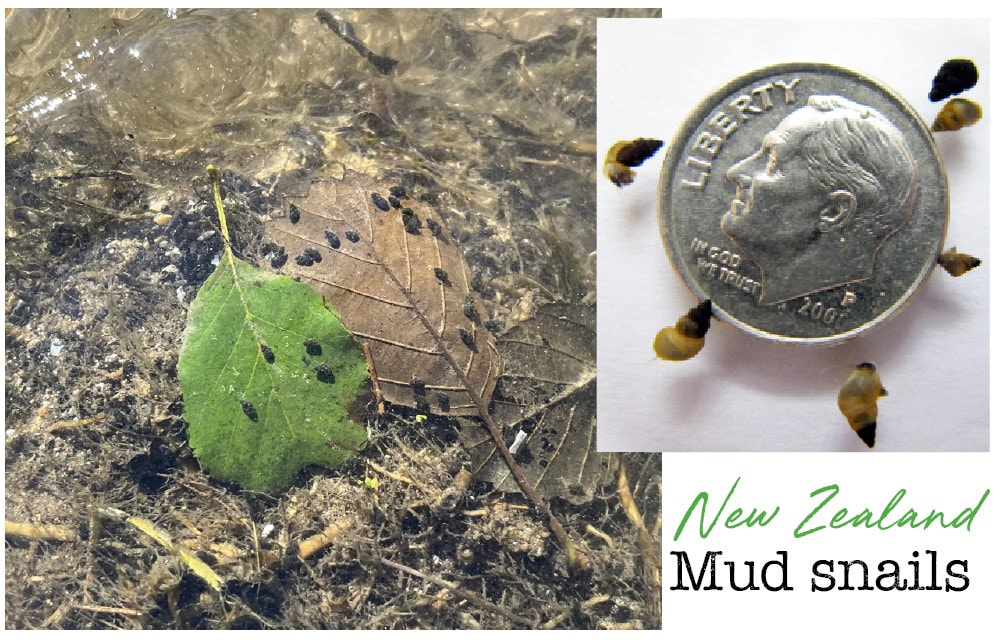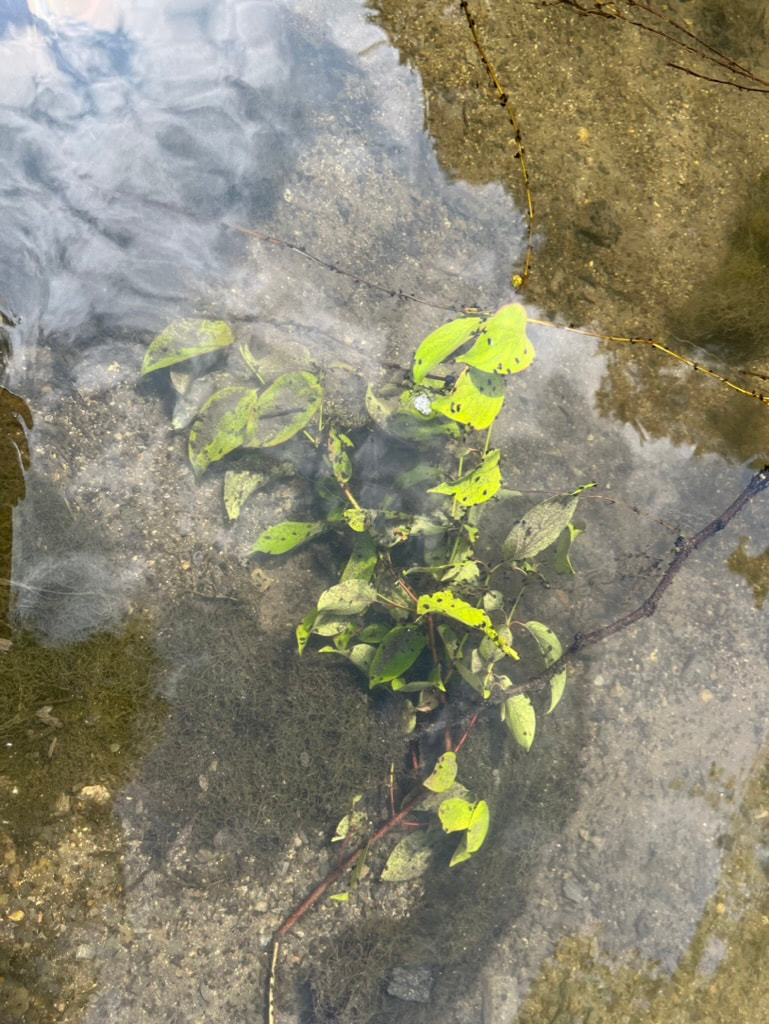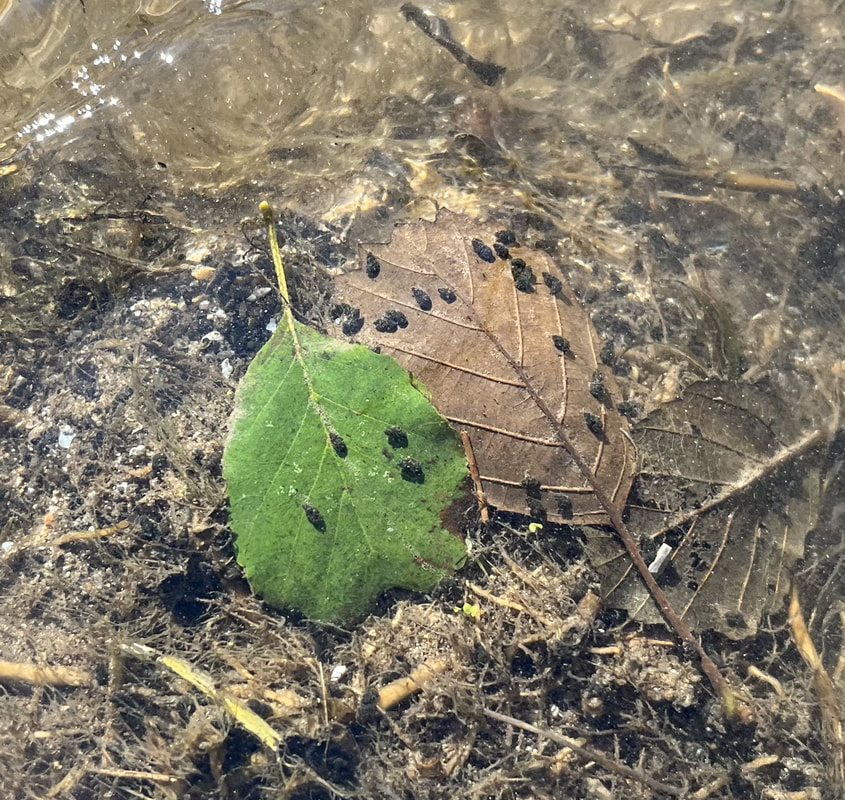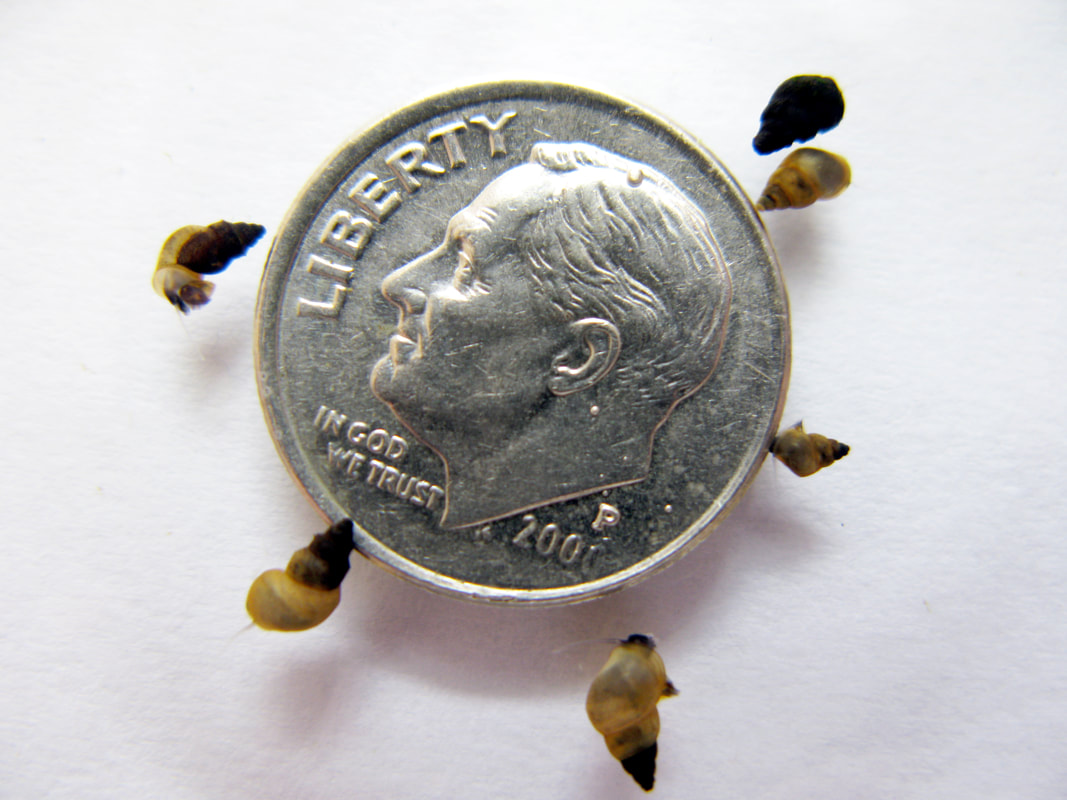Tiny invasive mud snails can cause huge impacts on aquatic ecosystem if we don't reduce the spread3/7/2024 Riverkeeper note: This story was written by Middle Susquehanna Riverkeeper John Zaktansky. He can be contacted directly at [email protected] Several years ago, Middle Susquehanna Riverkeeper West Branch Regional Director Andrew Bechdel noticed signs around Spring Creek about the New Zealand mud snail, and the information piqued his curiosity. “As an amateur naturalist and volunteer, I’ve worked with aquatic invasive species, such as water chestnut, and much of the rhetoric surrounding invasive species is similar – the lack of natural competitors, the quick reproduction, the ability to out-compete the native species around it,” he said. “However, I came across the name of Dr. (Edward) Levri in a Trout Unlimited Spring Creek chapter meeting and began learning more about him and the New Zealand mud snail and I soon realized what an incredible species it is.” Levri did his graduate work at a PhD program at Indiana University-Bloomington, ultimately studying the mud snails in their native New Zealand habitat before taking a position as professor of biology at Penn State.
Rapid reproducers Once New Zealand mud snails get into a waterway, it doesn’t take them long to take over due to an elevated rate of reproduction, according to Levri. “It takes the female, once it is born and under proper conditions, about two to three months to be ready to start reproduction,” he said. “At that point, when they become large enough – about 5 millimeters in length – these snails brood their offspring, which is a little bit unusual in snails, in a brood chamber behind their head.” While a female can usually have 30 to 50 to 70 young at a time, Levri has counted well more than 100 – sometimes 120 – baby snails in some broods. “And if conditions are right, an individual can go through multiple broods per year, so that means a single female is making genetically identical copies of herself potentially 300 times a year,” he said. “Each of those individuals can start to reproduce after about three months, so you do the math. One female can in essence, under proper conditions, lead to a million individuals in a year’s time. It doesn’t take that long.” Invasive impacts Because they are so small, detecting the mud snails in a waterway is difficult until they are at numbers that can start causing issues. Studies haven’t been done on how lower-sized populations impact streams, but Levri admits that there have been populations of New Zealand mud snails that number 500,000 to 800,000 per square meter. “Think about that. That is a lot of individuals basically coating a surface. If they can obtain those high densities, they are definitely going to have an impact on an ecosystem,” he said. “They can really affect the food chain. They consume a lot of algae, leaf litter and overall dead organic matter. How much algae then is there for other species? It makes it difficult for other species, especially other grazers like other snail species.” When New Zealand mud snails become common, Levri pointed out that tend to become the dominant grazing species in the area. While there are a few areas where that isn’t true, he reports that holds up in most places. “In fact, in one case, they were found to consume about 75 percent of gross primary productivity which basically means that all of the algae in the stream, about 75 percent of it was consumed by these snails,” he said. “And because they can become so abundant, they can dominate nutrient cycles. Nutrients moving through an ecosystem are an important part of what makes an ecosystem an ecosystem.” This includes nutrients like nitrogen and carbon that have to move from one organism to another so that top-order consumers like humans or bald eagles are able to get those nutrients. “New Zealand mud snails are known to dominate those nutrient cycles, and when that happens, it changes an ecosystem drastically,” Levri said. It changes how food webs work. So, some species that may be common in areas where New Zealand mud snails are not found, you don’t find them in areas where the mud snail has taken over and the opposite is true, as well.” An example to their bigger impact can be seen at higher-level aspects of the food web, such as in species like the trout, in which many people are concerned, according to Levri. “In areas where these snails become dominant, trout end up feeding on them a lot, but they tend to be a very bad food source. They’re not very nutritious in general,” he said. “Because they are operculate snails, they have a door that the snail uses to close itself inside its shell to withstand bad conditions. In the case with trout, one study found more than half of the snails consumed by trout went all the way through the trout and came out the other end alive.” That causes two very big problems, Levri pointed out: “One, the trout is not getting any nutrients – and the trout are working as a dispersal mechanism.” He referenced a different study that looked specifically at the lack of nutrition and impacts on trout species, which showed that the weight of trout declined when New Zealand mud snails were in the system. “The trout were suffering more because of the effects of the mud snail.” The species’ impact at smaller densities has not been studied as thoroughly, but “we do know there are changes in the ecosystem. We just don’t know the specifics.” Assessing the area Detecting the mud snail in your waterway is difficult, and the “eye test” is still the most common way to accomplish this despite how tiny the species is. “I usually take time to look over rocks and woody debris in a stream, but it can be hard to see if the population is below a few hundred per square meter,” Levri said. “The better way is to use eDNA – environmental DNA. If you have the right equipment, you can sample the water and extraneous pieces of DNA from the species can be detected at lower quantities. For example, we were able to find fairly low densities of New Zealand mud snails in Bald Eagle Creek in a place not detected otherwise using eDNA and then go back and find them more traditionally.” In some places of our greater watershed, Levri admits the species is very prevalent, such as Spring Creek near Fisherman’s Paradise in Centre County. “A couple students right now are trying to determine densities, but again it is not easy to do because they are very small. The baby snails are less than a half-millimeter in length which is barely visible to the naked eye, so to do that, they have to take sediment samples, put them through sieves, use forceps and go through sand and silt and mud and find every single individual in those samples to try to estimate things,” he said. “It can take my students weeks to get through one sample.” Levri’s team are finding densities in the thousands per square meter in some locations, ranging between 5,000 and 10,000 in some of the higher density sections. Other areas, they find the New Zealand mud snails in the hundreds per square meter. “In some areas of the same stream we are finding really high densities, and in other areas of the stream where water chemistry is basically the same, we are hardly finding any snails and it is not exactly clear why,” he said. Reducing the spread One thing that is clear is that once mud snails enter a waterway, they are likely there to stay. “There are no known successful eradication events of the New Zealand mud snail,” said Levri. “Potentially you could do it with some really strong chemicals, but to do it, you would have to kill a lot of the things you’d want to keep there. Obviously, that is usually not a good strategy.” So, instead, the key is to reduce the spread of the species in our waterways. “Early detection helps with that. Most of it is through recreational water usage, stepping into infested waters with a pair of sandals, for example, and the snails get into the Velcro or get stuck in the mud in the tread of someone’s boots and then hitch a ride to a different waterway,” said Levri. “People need to know which streams are contaminated and then take steps to reduce the chance of spreading the snail.” Decontamination can be done in different ways, but Levri admits it unfortunately can be inconvenient. “Often what I do is put my waders into a freezer overnight after being in a waterway that I know is contaminated, but using a freezer can cause some problems. It can, over time, cause cracking so that may not be what everyone wants to use,” he said. “You can use prolonged drying – really dry them for like three weeks to a month – that will do it too, but sometimes people want to get back in the water sooner.” He also said you can soak them in certain chemicals designed to help eradicate species like mud snails off equipment, and added that even the more common cleaner Formula 409 “either pure or 50 percent solution for like a half an hour” can be effective. Education is also critical, obviously, in letting people know where mud snails have been detected so that proper precautions can be taken. Levri suggested maps from the US Geological Survey and the Mid Atlantic Panel on Invasive Species as good tools, although “the mud snails are likely much more prevalent than they indicate since it takes a while to find them in many of the streams and then get them mapped. “The key takeaway is to keep your eye on the signs, try to avoid contamination and know that it isn’t enough to just scrape off your boots or spray on Formula 409,” Levri said. “We all have to make an effort to try to reduce the spread.” It is the one lesson that has resonated the most with Bechdel about this unique species ever since seeing those signs on Spring Creek several years ago. “While it's nearly impossible to get rid of them once they're introduced to a waterway, it only takes a few precautions to stop the spread,” he said. “The fate of the waterways and the spread of the New Zealand mud snail are in the hands of the everyday recreationist.” For more resources on the New Zealand mud snail, visit the designated page on the Pennsylvania Fish and Boat Commission website. You can also check out this video from their agency:
2 Comments
3/13/2024 09:22:35 pm
Your writing style is also fantastic! It kept me hooked from beginning to end. It's clear you put a lot of thought and effort into it, and it definitely shows. I'm definitely going to be sharing this with my friends and family.
Reply
Leave a Reply. |
AuthorsRiverkeeper John Zaktansky is an award-winning journalist and avid promoter of the outdoors who loves camping, kayaking, fishing and hunting with the family. Archives
July 2024
Topics |





 RSS Feed
RSS Feed